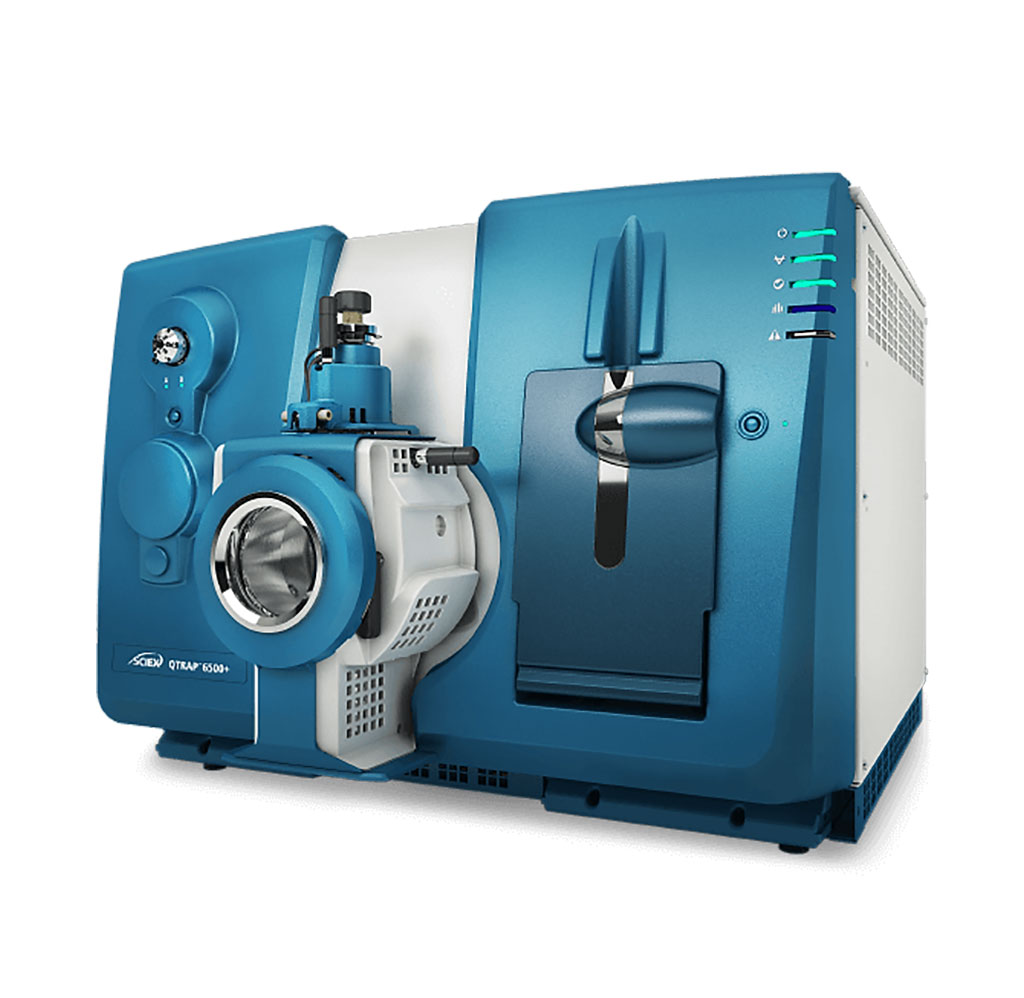Biomarkers Predict Whether RA Patients Will Respond to DMARDs
By LabMedica International staff writers
Posted on 19 Nov 2020
Rheumatoid arthritis (RA) is characterized by unremitting joint inflammation that results in bone and cartilage destruction and a decreased quality of life. RA may arise from a decreased ability of the host immune response to engage resolution programmes that prevent the precipitation of acute inflammation into chronicity. Posted on 19 Nov 2020
Disease-modifying anti-rheumatic drugs (DMARDs) are widely used as a front line therapeutic in the treatment of RA. The low dose methotrexate (MTX) is the anchor drug, where it is administered alone or in combination with other DMARDs such as hydroxychloroquine and sulfasalazine. However, patients treated with DMARDs rarely go into full remission, with as many as 50% of patients being resistant to DMARD treatment or developing resistance over time.

Image: The QTRAP 6500+ Liquid Chromatography with tandem mass spectrometry system (Photo courtesy of Sciex).
A team of Medical Scientists associated with Queen Mary University London (London, UK) took plasma samples at baseline and six months from 112 and 44 patients, respectively. Peripheral blood samples and synovial tissue were obtained from patients recruited at Barts Health NHS Trust into the Pathobiology of Early Arthritis Cohort undergoing ultrasound (US)-guided synovial biopsy of the most inflamed joint (knee, wrist or small joints of hands or feet).
Plasma was obtained from peripheral blood following centrifugation at 1500 × g for 10 minutes at room temperature. All samples were extracted using solid-phase extraction columns. Supernatants were subjected to solid-phase extraction for injection on a Shimadzu LC-20AD HPLC and a Shimadzu SIL-20AC autoinjector (Shimadzu Corporation, Kyoto, Japan), paired with a QTrap 5500 or QTrap 6500+ (Sciex, Framingham, MA, USA). Total RNA-sequencing (RNA-seq) was performed on a HiSeq2500 platform (Illumina, San Diego, CA, USA).
The team used functional lipid mediator profiling and deeply phenotyped patients with early rheumatoid arthritis (RA), and they observed that peripheral blood specialized pro-resolving mediator (SPM) concentrations are linked with both DMARD responsiveness and disease pathotype. Machine learning analysis demonstrates that baseline plasma concentrations of resolvin D4, 10S, 17S-dihydroxy-docosapentaenoic acid, 15R-Lipoxin (LX)A4 and n-3 docosapentaenoic-derived Maresin 1 are predictive of DMARD responsiveness at six months. Assessment of circulating SPM concentrations six-months after treatment initiation establishes that differences between responders and non-responders are maintained, with a decrease in SPM concentrations in patients resistant to DMARD therapy.
Jesmond Dalli, MD, Professor of Molecular Pharmacology and Senior author of the study, said, “Currently a large proportion of patients with RA are unresponsive to DMARDs and are therefore unnecessarily exposed to their side effects. In addition, it can currently take up to six months from treatment initiation to determine whether someone will or will not respond to these medicines. For the patients who do not respond to the treatment, the disease gets worse before they are able to find a treatment that is more likely to work for them.”
The authors concluded that the assessment of circulating peripheral blood specialized pro-resolving mediator (SPM) concentrations six months after treatment initiation establishes that differences between responders and non-responders are maintained, with a decrease in SPM concentrations in patients resistant to DMARD therapy. These findings elucidate the potential utility of plasma SPM concentrations as biomarkers of DMARD responsiveness in RA. The study was published on October 27, 2020 in the journal Nature Communications.
Related Links:
Queen Mary University London
Shimadzu Corporation
Sciex
Illumina














